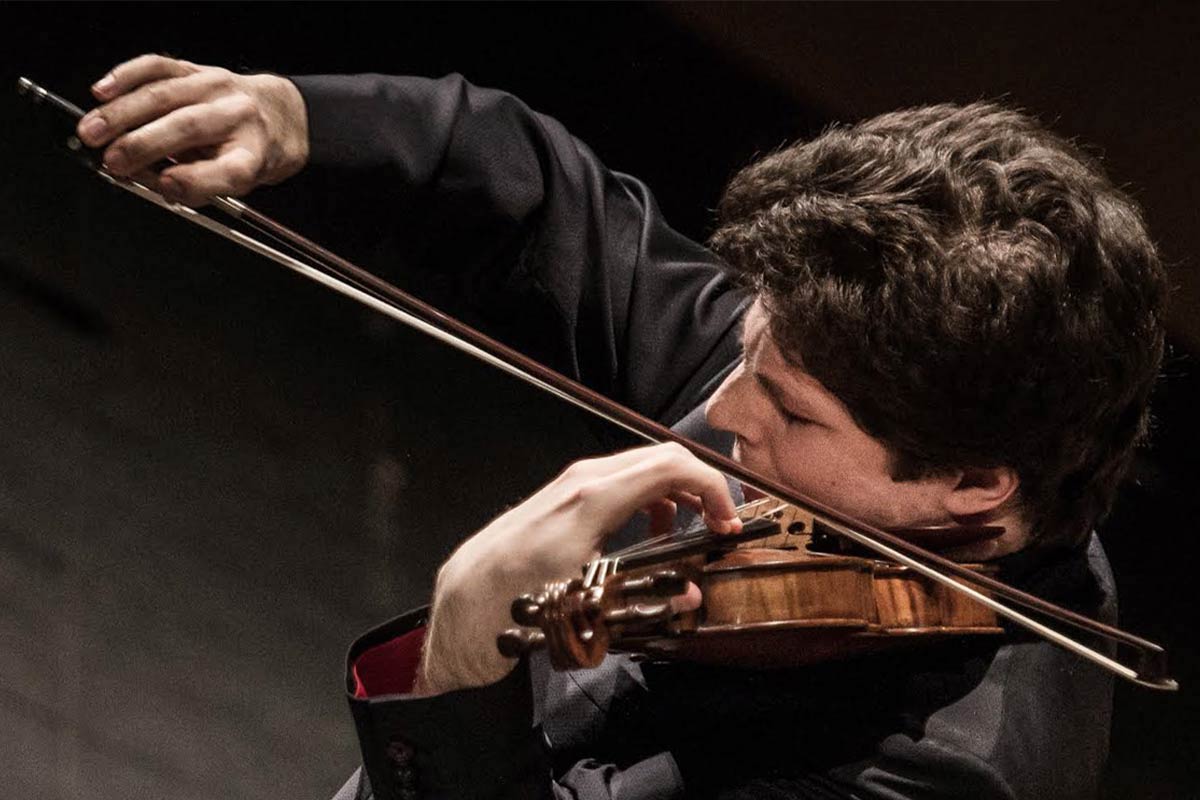Grammy Award-winning violinist Augustin Hadelich is making his long-awaited debut with the Sydney Symphony in September, performing Brahms’ beloved Violin Concerto in a program that also features Bruckner’s glorious Symphony No 3, conducted by the Orchestra’s Principal Guest Conductor, Sir Donald Runnicles.
Born in Italy, the son of German parents, Hadelich is an extraordinary musician, a devoted student of the great masterworks and an enthusiastic advocate of new ones. Named Musical America’s 2018 Instrumentalist of the Year, he is consistently cited worldwide for his breathtaking technique and illuminating interpretations.
Ahead of his Australian debut he spoke with the Sydney Symphony’s Editorial Manager and former Limelight Deputy Editor, Hugh Robertson, about Brahms’ legacy, and the special connection he feels with conductor Donald Runnicles.

Augustin Hadelich. Photo courtesy of the Sydney Symphony Orchestra
The Brahms Violin Concerto is a work you know well, having performed it many times and recorded it in 2017. What do you feel when you perform it?
The Brahms Concerto is one of the greatest works written for the violin. I don’t think I’ll ever grow tired of it!
The violinist Joseph Joachim called the work one of the four great German violin concerti. Where does it sit in your estimation?
We have Joachim to thank for working very closely with Brahms on the violin part. Brahms was a great pianist but writing for the violin did not come as easily to him. Thanks to Joachim, it suits the instrument well, yet the difficulties are never flashy, meant to impress virtuosically, but rather are there only in service of the musical ideas. When everything goes well in a performance of the Brahms concerto, it won’t sound as difficult as it actually is — that’s the goal!
Has your relationship with the concerto changed over the years? Do you find new things in it each time you play it?
The Brahms Concerto is one of the most rewarding works I know. Even after many years I feel like I’m still delving deeper into the piece, and there are more layers to uncover. Growing up, I was mostly focused on the violin part, which is beautiful, lyrical, dramatic – it was as an adult that I studied the score more and more closely and understood more the musical dialogue between the solo violin and the orchestral lines. The more time I put into this piece, the more inspiration I get back from it!
This is your debut with the Sydney Symphony. Are you excited to perform in the Sydney Opera House?
I am thrilled to play at the Sydney Opera House for the first time. I remember seeing photos of it as a child. And I heard that after the renovation the acoustics are sounding great.
You have performed with Sir Donald Runnicles before, and in fact very recently. How do your personalities and artistic approaches to the music fit together?
Whenever we have worked together, I found that Donald and I had a similar musical instinct and share a love for the pieces we played together. We haven’t done the Brahms together before, but have been talking about it for years, ever since we first played together! In a way, it’s the ultimate collaborative piece between a conductor and a violinist– I only want to play it with conductors with whom I am on the same wavelength musically. It never feels the same to me with two different conductors, or with two different orchestras.
You recently joined the faculty of Yale School of Music. Has that been a fulfilling experience? Has teaching made you reevaluate any of your own techniques and methods?
I teach a handful of students at Yale School of Music, as much as I can fit into my performance schedule. I find teaching very rewarding. Since I benefitted myself from very good teachers when I was young, and yet because there are also many things that I wish I had been shown or told earlier, I feel that passing on what I know about the violin and about music is very important. I know that my own performances are drawing inspiration from my teaching, and my teaching in turn is grounded and enhanced by my performances.
Your current instrument is the 1744 “Leduc/Szeryng” Guarneri del Gesu, and you have performed on Stradivarius instruments previously. What is the personality and character of your Guarneri? And do you find it takes time to get acquainted with a new instrument?
The sound of the Leduc violin has a warmth and complexity that I have rarely heard in any instrument. When I first tried it, I was immediately drawn to it.
It always takes time to switch instruments, even between two instruments of the same maker – it is as if a singer suddenly has a different voice. In this case, the difference was huge, when I switched in late 2019. Every violin has its own quirks, strengths and weaknesses. The sound production on a Del Gesu is quite different than on Stradivari. However, I think the longer I play on an instrument, the more I sound like me again, because I can get closer and closer to the sound I want!
Augustin Hadelich performs Brahms with the Sydney Symphony Orchestra conducted by Sir Donald Runnicles, 21–24 September. Visit the Orchestra’s website for tickets and more information.












Comments
Log in to join the conversation.